Scottish Secretary Ian Murray has cut the first steel for a new £8 million transport barge at Navantia UK’s Methil yard, marking the start of fabrication for a vessel that will play a key role in the construction of the Royal Navy’s new Fleet Solid Support (FSS) ships.
The 85-metre by 25-metre barge, weighing 1,400 tonnes, will move ship blocks between Navantia UK’s Appledore yard in Devon and its Belfast facility, where final assembly of the three FSS ships will take place.
Bow sections of the support ships will be built on board the barge before transportation to Northern Ireland.
Murray said: “It is fantastic news that the team at Methil will be fabricating this barge which will play a key role in building three fleet support ships. Workers at the yard are highly skilled and will be playing a key role delivering in this important defence contract.”
The UK Government said the project represents a strategic investment positioning the Methil yard for future defence work. It will create 35 new roles, including 14 apprenticeships.
Matt Smith, Navantia UK’s general manager at Methil, said: “This project is good news for Methil and our skilled workforce and it positions us to support future defence work. We’re particularly pleased to be able to continue our established apprenticeship programme and recruit more apprentices on the back of this award, ensuring we develop the next generation of skilled marine engineers.”
Minister for the Armed Forces Luke Pollard described the project as a demonstration of how “our Armed Forces act as an engine for growth, driving economic opportunity across the UK and delivering on the government’s Plan for Change.”
Unions also welcomed the announcement. Robert Deavy of GMB Scotland said: “We welcome this clear progress towards a secure and sustainable future for a yard that is capable of playing an important role in Scotland’s industrial strategy.” Unite industrial officer Bob MacGregor added: “The increase in new apprenticeships in particular is a great step forward for the yard… a positive development which signals that the Methil yard and its highly skilled workforce remain critical to Scotland’s industrial base.”
The Methil site, along with Arnish on the Western Isles, was acquired by Navantia UK in December 2024 following the collapse of Harland & Wolff. The UK Government backed the takeover, which secured hundreds of Scottish jobs.
Navantia UK is prime contractor for the £1.6 billion FSS programme, building three supply ships that will provide stores and ammunition to the Royal Navy’s Carrier Strike Group while at sea. Work is shared across Navantia UK’s four yards, with final integration in Belfast.
Since acquiring the former Harland & Wolff sites, Navantia UK has begun a programme of investment to upgrade facilities, transfer knowledge and introduce new technologies across defence, maritime and renewable energy sectors. The company said the new barge will support not only the FSS programme but also future shipbuilding projects.


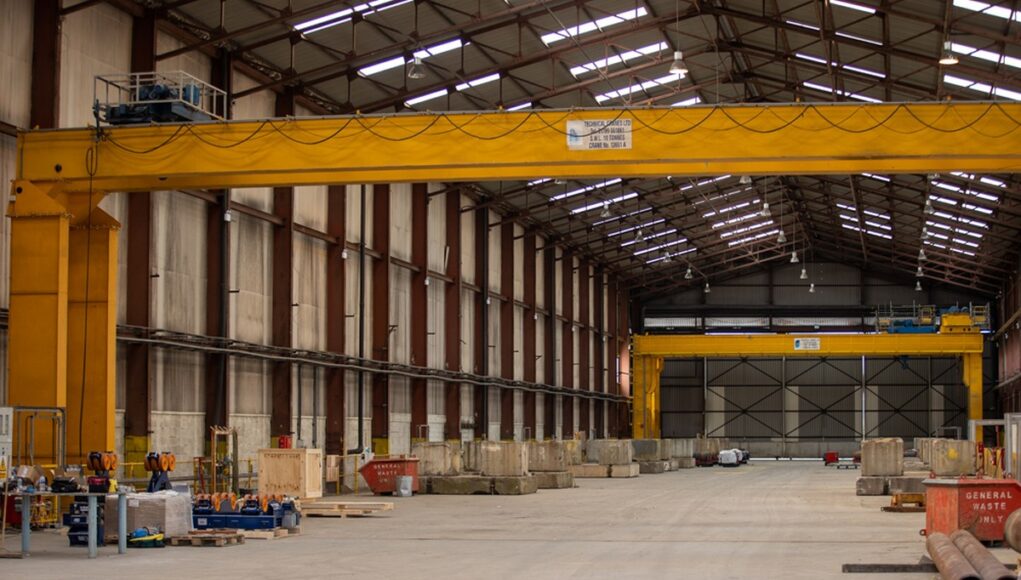

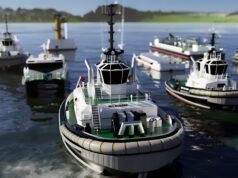
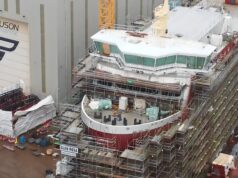

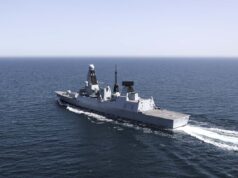

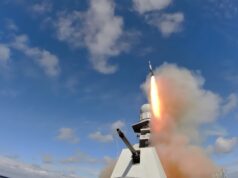
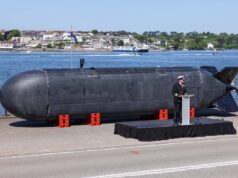
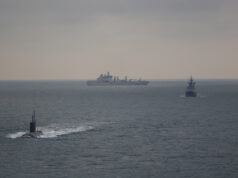
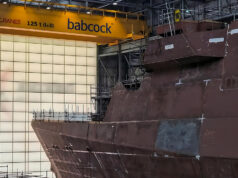

*Bow sections of the support ships will be built on board the barge before transportation to Northern Ireland*.
Interesting, so one section at a time gets built on the barge, then It sails to Northern Ireland, gets unloaded, returns and the process starts again.
Weird working pattern.
But that is what comes of a disparate mish-mash of yards, with widely differing facilities building bits of ship in ways to suit the oddities of the yard.
Indeed, true efficiency comes with very large yards building the completed product.
The Harland & Wolff yard is more than (physically) big enough to handle a complete FSS, the problem is probably the lack of skilled labour.
Hopelessly inefficient and will inevitably lead to delays and cost overrun.
Who cares? it’s only tax payers money.
That is in part due to too few orders so they spread the work around to keep the yards open and the skills base in hand.
Until we get the funding and procurement system sorted it will likely remain the best way to maintain a vital industry without which we could not support the RN. It’s madding.
A quick look at the H&W Appledore page online and it is quite a reasonable facility. The main covered dry dock on paper at least looks like it could handle the building of something along the lines of a River Class OPV. We currently have 8 OPV in service and they are going to need replacing in the not too distant future so why not start now come up with a flexible design capable of carrying a small number of PODS, etc. put them into low rate production over an extended period of time so that the RN gets a constantly renewing fleet of useful vessels of say 8 to 12 OPV able to undertake patrol, presence, afloat training, autonomous vehicle deployment and recovery and disaster relief, etc.. Very useful work a day vessels, a busy shipyard and an area of the country known to have full time employment challenges. What’s not to like?
Hmm, HMT and MoD. Oh well I thought it was a good idea…
Cheers CR
I like the idea, but there is an additional issue with that: Us, and those like us.
The Rivers are very effective craft, and have availability rates that the rest of the fleet could only dream of. But it’s because they’re so simple- not really even a CMS to speak of, or anything like that.
But, if a “River Batch 3” were to be developed, we’d be wanting it with a 57 mm gun (maybe we’d compromise with a 40 mm), preferably with Martlet bolted on the side, a hangar for a Wildcat (necessitating stores for their armament and probably AvGas), some kind of “light touch” air defence system- which presumably means Sea Ceptor, and a cannister launcher for NSM. Which suddenly requires a full CMS, plus 4 different kinds of weapon officers, a combat command centre, etc.
I exaggerate a little for effect, but you know what I mean.
As long as we can keep things simple, potentially using the PODS concept for any higher capability as you say, then it makes a lot of sense, and could find a market further afield (Ireland, maybe some of the Caribbean and Pacific islands, potentially NZ).
I think you might be wrong about the R2 CMS. I think they are fitted with the same BAE CMS as the frigates and destroyers; T31 excepted.
Thank you for the correction- I was reading from a B1 review and didn’t realise there was an upgrade in terms of that on the B2s. Would be interesting to see a comparison of the availability between the B1s and B2s to see if there’s a difference caused by the additional complexity.
You raise an interesting point there: The T31 having a different CMS. I don’t know how much of an issue it is, but seems strange that everything is on a common environment except one…
My guess is that the decision to go with Tacticos was influenced by price and exportability. There’s an argument that it is something of ‘an industry standard’ . The T31 systems are kind of a Thales ‘package’ which would reduce integration costs i suppose. The decision to give the batch 2 Rivers what was at the time the RN standard CMS is interesting. It makes it easy to upgrade the sensors and weapons fit and to include it in support contracts.
Certainly at 2000 tone the B2 could carry a significant armament if needed. If the RN ever work out how to actually deploy the PODS concept then the flexibility of these vessel could be significantly enhanced.
Another option if they ever get round to actually building arsenal ships would be to pair an OPV with a missile carrier. Shouldn’t be too difficult to sort out as the B2 ships are fitted with the BAE Systems CMS (Combat Management System).
Cheers CR
Am I right that B2s are closer in size to a corvette than an OPV? That being the case, then I can see some expansion of role, but the RN has been pretty dead set against corvette type vessels since the end of WW2 as far as I can see. Even if they’d be pretty handy for managing the GIUK gap, North Sea and Baltic.
I like the PODS idea, especially if there was one that worked with arsenal ships; At the moment, a B2 or even B3 probably doesn’t have the sensor, comms and ‘CEC’ capability to manage that- that’s expensive. But a PODS, that turns a B2 + arsenal ship into a mini distributed frigate, that would be something. But I don’t know how much we need a high-capacity AShM launcher- we need high capacity AD, and that would be a much more complex PODS…
Appledore built lots of ships including the Irish OPVs and some larger vessels for UK, all under cover (well most bits) but there are Issues with size and draught due to the Torridge. Seeing the samuel Beckett sat on the silt, out of the water was a strange sight.
Then there is the Sand Bar which can be Interesting apprently.
It seems strange not to build the Barge at Appledore though, I would have thought building the Barge and the bits together would have been more sense/cost effective ?
Yeh, I remember seeing some pictures of a vessel on the mud as part of an article. Apparently, they have to dredge the estuary from time to time. However, the facilities at the yard look quite modern and comprehensive though.
As for not building the barrage at Appledore the only thing I can think of is that their cutting and fabrication shops are busy on other stuff..? Other than that it seems a bit odd.
Cheers CR
I saw her standing there ! (Sure that’s a song)
Appledore has one big Issue, It’s on the Torridge.
But, It’s also a great asset able to build decent size ships if given the chance.
As well as the Irish OPVs (built very cheaply ) Appledore managed to build HMS Scott and HMS Echo and Enterprise as well as the Bow sections and many sponson units for the Carriers lets hope they manage to build up their workforce again to do all the work that is coming to them, i was once told that of all the UKs yards involved on the Aircraft Carriers project that Appledore had the best tonnage to manhour rate something that embarrassed some of the bigger yards.
Indeed and Appledore was the last English yard to build complete warships. Ship building on the Torridge and Taw, goes back many centuries, It was the Silt that caused the problems. Ships from there sailed to meet the Spanish Armada.
@CR It is a good idea. When the T31s enter service, even if the batch 1 Rivers have been sold the RN will have a fleet of 10 capable long endurance, long range, high availability patrol ships:worth noting that the R2s are the same size as the Black Swan sloops – they could easily be upgraded to such- not that I proposing sailing up the Yangste. But HMS Spey has conducted a freedom of navigation transit of the Taiwan straits. This fleet will give the RN meaningful global presence and influence.
Appledore built the 131m HMS Scott a number of years ago along with several of the Irish Navy’s OPV’s in that shed so it would easily build future RN OPV’s.
Co-ordinated Navantia investment in an infrastructure for assembling large ships. Sunk cost for FSS making 30k ton MRSS affordable?
Funny reading this story, because it hasn’t happened yet! Murray is due to to visit the yard today. There a meeting with him and the first cut of steel will be made by one of the workers around 12 noon.
I have a great Idea, Lets build a ship so we can build bit’s of another Ship.
A bit like building a Covered Frigate Factory to build Ships that are Wheeled out of the shed on a huge loader, onto a barge, towed down stream to be floated off, then towed back up stream to a dry dock for finishing in all the lovely Scottish weather.
But It’s all good apparently.
I find it unlikely that any fabrication work will be carried out on board the barge – there’s really no point or practical reason for that. Heavy steelwork like bow sections needs the stable ground, overhead cranage, jigs, and weather protection that a covered facility like the Appledore build hall provides. A floating transport barge simply doesn’t offer those conditions.
It’s far more likely that the blocks will be built under cover at Appledore, then loaded onto the barge and shipped to Belfast for final assembly. That’s the standard modular approach in shipbuilding, and it fits perfectly with the role Navantia have described.
In fact, Navantia themselves are calling it a transport barge, not a fabrication or support barge. The confusion seems to have come from how some reports were worded – with phrases like “built on it” that give the wrong impression. In reality, the barge’s purpose is to move prefabricated modules between yards, not to serve as a construction site.